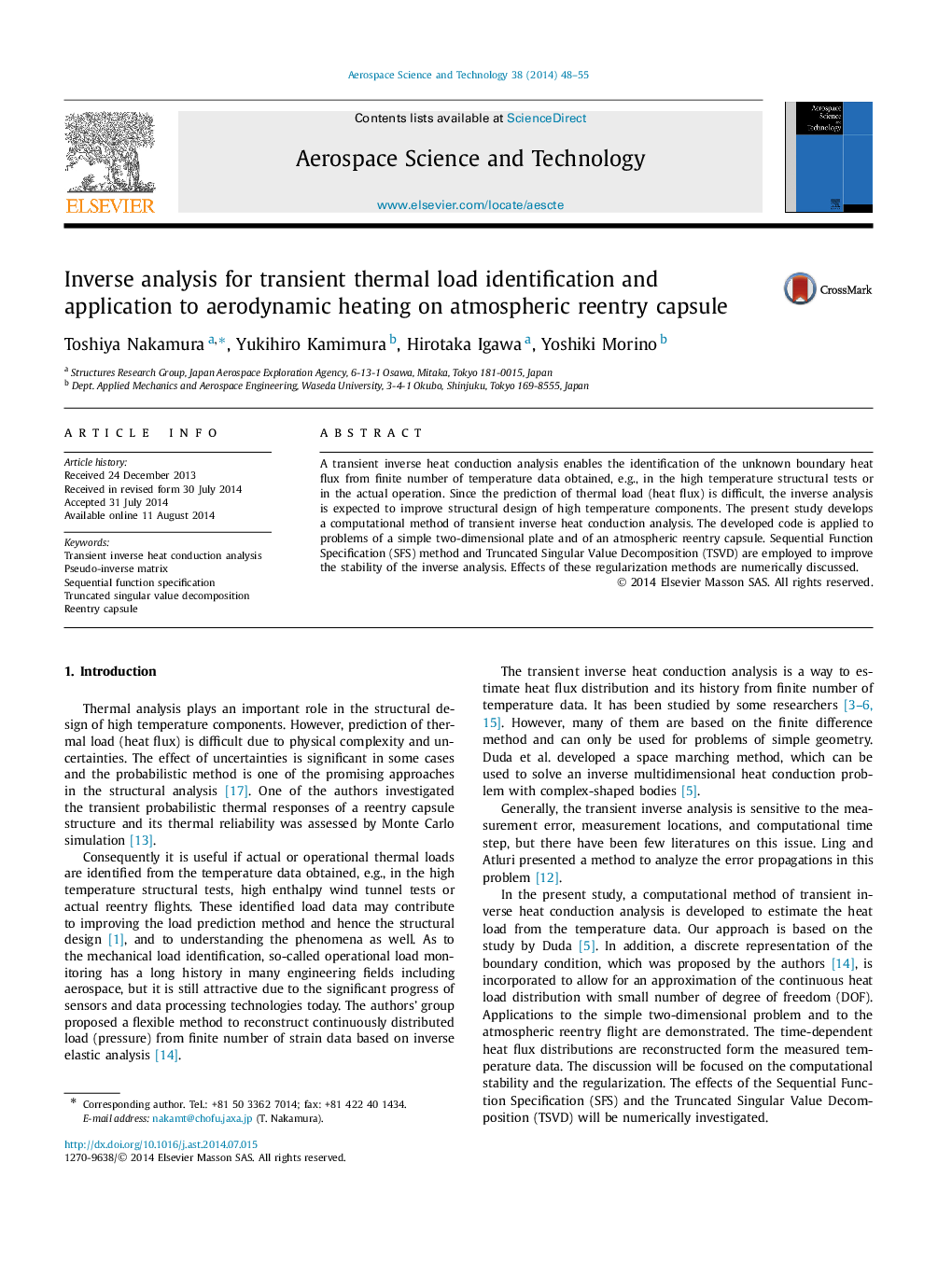| Article ID | Journal | Published Year | Pages | File Type |
|---|---|---|---|---|
| 1718048 | Aerospace Science and Technology | 2014 | 8 Pages |
A transient inverse heat conduction analysis enables the identification of the unknown boundary heat flux from finite number of temperature data obtained, e.g., in the high temperature structural tests or in the actual operation. Since the prediction of thermal load (heat flux) is difficult, the inverse analysis is expected to improve structural design of high temperature components. The present study develops a computational method of transient inverse heat conduction analysis. The developed code is applied to problems of a simple two-dimensional plate and of an atmospheric reentry capsule. Sequential Function Specification (SFS) method and Truncated Singular Value Decomposition (TSVD) are employed to improve the stability of the inverse analysis. Effects of these regularization methods are numerically discussed.
